 Category: Virginia Vineyards Association
Category: Virginia Vineyards Association
February is the new April
How time flies. It’s been nearly two years, almost to the day, since I last wrote on this blog. And in 2015, when I posted that story, February was a different kind of month; not just cold, not just bitterly cold, but so cold that we wondered if our vineyard would survive the night. The forecasts said temps could reach minus 13 degrees on the night of February 20, and that was scary.
Vines can survive freezing weather without a problem, especially if they’ve had time to harden off (which requires some cold weather) before the big chill. They can withstand temperatures down into the teens and even below zero. But negative 13 degrees, which is what was forecast two years ago? That’s a killing freeze.
So flash forward to this February. We had two kinds of flowers blooming on our property, and I saw cherry trees and forsythia in full bloom last week. We spent evenings on our deck, not just to enjoy the spectacular weather, but to avoid having to turn on the air conditioning.
And our vines? Well, let’s just say I’m praying for them.
We had some colder weather move in, and the overnight lows were close to freezing. But daytime temps were well above 50 degrees every day, and that’s when vines start coming out of their winter slumber. At some point, the buds swell, then break, and then start sending up shoots. That’s when they’re vulnerable. A late frost in April or, for that matter, a normal frost in March, could threaten much of this year’s crop.
That happened last year. Shortly after budbreak, about the time that the shoots were an inch or so in length, we had two days in which the temperature dropped below freezing in the very early morning, killing a significant share of the primary buds on all of our vines. The secondary buds seemed to survive, and they sent up shoots. But those buds aren’t even remotely as fruitful as the primary buds.
We lost most of our crop. We might have had 35 gallons of wine in 2015, and perhaps 20 percent of that in 2016. Other vineyard managers i spoke to around the state relayed similar experiences.
So, what to do? Well, there are lots of ways to protect vines from late frost events, most of them very expensive. Some vineyards light fires, others spray water over the vines. (When water freezes, it releases heat. The only problem is that you need to spray water for the duration of the frost event.) Other vineyards rent helicopters to fly over the vines, forcing warmer air down. Of course there are only so many helicopters available on any given night, and they aren’t cheap. Maybe for our small hobby vineyard we could buy a big drone to fly over the vines.
As it happens, the annual winter technical meeting of the Virginia Vineyards Association began last week, and the unseasonably warm weather was a definite topic of conversation. In fact, one of the sessions was all about using sprays to combat late frost.
Michela Centinari of Penn State University discussed two in particular: Amigo oil, which can be used to delay budbreak, and KDL, which may lower the freezing point of vine cells. Both approaches seem promising, and I think we might lay in a stock of KDL for next year.
But for now we have one more trick up our sleeves that could work – late, or delayed pruning.
Each year, while the vines are still dormant, we prune to get them ready for the growing season. We mostly use a technique called cane pruning, which involves taking a shoot from the previous season and laying it down on the fruiting wire. That shoot, now a cane, will send up new shoots that will bear fruit.
The second, which we employ on some vines, is called spur pruning. Instead of laying down a new cane, we trim the shoots on the old cane to two or three buds, each of which will send up a new shoot that will bear fruit. Some will get pruned off during the growing season.
What’s important here is that the process of pruning stimulates growth. Many vineyards have begun employing a process known as double pruning, in which they trim away the clutter during the winter, saving the final pruning until later in the Spring, when they hope the danger of frost is past.
Obviously, that’s a very labor intensive approach, and not every vineyard can double prune. But we’re managing some 225 vines, and they can be pruned in a couple of days. So, we can afford to wait.
So that’s our approach for this year, and probably every other year going forward. If February is the new April, then procrastination is our new friend.
Saving Our Grapes from Birds and Other Predators
Last year, as we approached harvest time, I was admiring our grapes one weekend day when I realized it was time to check the sugar levels. Unfortunately, I had left my refractometer in Fairfax, which, well, wasn’t very helpful. But not to worry. I made a mental note to bring it with me to Afton the following weekend, when I was sure that the sugar in the grapes would be just about perfect.
I remembered the refractometer, but unfortunately, I could not find the grapes. I searched the Petit Verdot rows, where I was sure I had seen small clusters hanging, and the Cab Franc rows, which I knew also had grapes hanging from the vines. But there were none to be seen.
It was kind of like the time my car was stolen at the train station in Jersey. I stared at the space where my car used to be wondering why it was no longer there, and then wandered around the parking lot as though I hoped it was magically somewhere else. Somewhere other than where I knew I had left it. Self-delusion is a terrible thing.
My car was gone, all those years ago, and last year, so were my grapes. My first thought was birds. Yeah, they love grapes, and they know when they’re ripe. They descend upon the vineyard just at the time when the brix (a measure of the sugar level) is just right, and they steal everything in sight.
Of course, it could have been other predators. It seems that all of nature has its eyes on grapevines as the harvest season grows near, and so the vineyard manager needs to be alert. Raccoons love grapes, as do squirrels and bears and crows and turkeys. As it happened, our neighbors told us about a bear they had spotted wandering through our property last year, right around the time we found a huge gash in our deer fence. Jim Parkhurst of Virginia Tech told the summer technical meeting of the Virginia Vineyards Association that a bear will sit down in the vineyard, pull clusters of grapes off the vine, and then move down the row, sit again and pull off more clusters.
But, of course, it’s hard to know for sure which predator stole my grapes. Last year was a very difficult year because of the acorn shortage. There are two types of acorns; those that come in every other year and those that come in annually. In 2013, both types failed. So squirrels especially were desperate for a meal, and vineyards were like the free sample aisle at Costco. I talked to vineyard managers who reported losing more than a third of their grapes to predators last year, which is extraordinary.
So, this year, we’re all taking precautions.
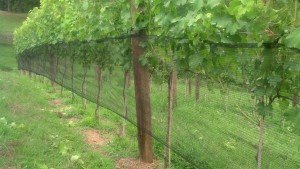
This is more or less what the netting will look like once it’s dropped. Here’, I’ve just attached it to the first catch wire on the Viognier vines, and haven’t yet rolled it up.
I spent the day Sunday (after a full day Saturday working with the Vineyard Goddess on canopy management) installing bird netting. Bird netting places a barrier between the grapes and predators, and hopefully it will be enough to preserve this year’s crop. I got about half-way through the vineyard, hanging the netting on my Viognier and Petit Verdot, and then rolling it up so that it will be out of the way until it’s needed.
I should point out that I would have also gotten the netting up on my Petit Manseng except that the Vineyard Goddess had found – I can’t even bring myself to say this – a bird nest in those rows, and asked me to wait a week or two. I wanted to rip the nest out, but I couldn’t. She’s the Vineyard Goddess, after all, and she outranks me when we’re working among with the vines.
As it turned out, I wouldn’t have gotten that far anyhow. I ran out of clips before I was quite through the Merlot, and I ran out of energy before I got to the Cab Franc. So, I ordered more clips today from Spec Trellising, and I’ll be praying next weekend that I don’t run out of netting. The roll that they shipped is 1,650 feet long, which should give me a couple of feet to spare. But who knows.
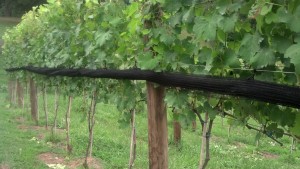
Here’s what the netting looks like after it’s rolled up, waiting until the grapes are ripe enough to attract predators.
A couple of words of advice to the weekend vintner about installing bird netting. First, don’t expect instructions. Apparently the netting doesn’t come with any. And don’t expect advice on how to install it – I didn’t get much. Also, don’t think the Internet will be of any help. I googled side-netting, bird-betting and every conceivable permutation of those terms for hours and got no help whatsoever. I did find lots of helpful advice, videos included, on different kinds of netting, especially the stuff that hangs over the trellis, creating a ceiling of sorts that you can drive a tractor underneath. But nothing for my side netting.
As it turned out, though, much to my surprise, bird netting isn’t all that hard to install.
Once I got the netting into the vineyard, and looked at the net clips, I was able to figure out (after one false start) how to do it. The clips look like tiny boat anchors, with a hook at the top to hold it to a catch wire and one hook on each side at the bottom. What I finally realized is that the back hook holds the netting on the catch wire permanently, and the front hook holds the rolled up netting (the storage position) until it’s ready for use.
I have lots of other questions, but I’ll figure it out as I go. And I ordered one more piece of equipment – small “C” hooks, which will hold the netting together at both the top and bottom to keep birds from finding a way in. I also have a tagging gun which is supposed to be a good way to zip shut the net at the bottom, but truthfully, I couldn’t figure out how to make the gun work this weekend.
I’m feeling pretty good about the netting, though. Unlike last year, I think most of my grapes will make it through to harvest. And if they don’t, it will be for reasons other than birds and other predators.
And, this is my first real harvest. As upsetting as it was to see my grapes stolen by predators last year, the fact is, it wasn’t that much of a loss. We had dropped fruit during the year to give the two-year old vines a good start in life. We wanted their energy to go toward developing a strong trunk and root system, not grapes. So, for those of you wondering exactly how many grapes were stolen, the answer is something like a half-dozen or so clusters that we missed when dropping fruit.
Not the end of the world, thank God. More like a cheap lesson for the future.
A Tough Year for a Weekend Vintner
It was a tough year to be a weekend vintner.
When you’re separated from your vineyard by a two-hour drive, you have to make the most of your time. And we try. But the weekends are short, and there’s so much to do. And every curve that Mother Nature throws your way puts you just a little bit further behind. This year, Mother Nature was throwing curves, sliders, and the occasional spitball.
This year began with a late spring frost, followed by rain. Not just a little rain, but lots of rain, which gave rise to all kinds of fungal disease potential. Powdery Mildew, Downey Mildew, Botrytis, you name it.
And then came the pests: Japanese beetles, birds, raccoons, squirrels, deer, and even bears. Yes, indeed, bears. No lions or tigers,though. Just birds, deer and bears. And yeah, racooons and beetles and the rest of the pests.
That’s one of the reasons I’ve not been able to pay much attention to this blog. Another was that Chris and I took on responsibilities for editing Grape Press, the quarterly publication of the Virginia Vineyards Association. But mainly it was the challenges of the growing season. It seems like we spent all of our spare time each weekend keeping up with the vineyard. Spraying, cultivating, pruning, and spraying. Yeah, lots of spraying. It wasn’t easy.
Let’s start with the late frost. I remember arriving at the vineyard early one Saturday morning to find our whites all but devastated. Honestly, it looked as though someone had sprayed Round-Up and left them to die. For a while, I actually wondered if they had been the victims of spray drift from the herbicide we had used to clear a row for new the new vines we had planted this year.
Fortunately, that was not the case.
After checking the temperatures recorded nearby, I realized that we had probably experienced at least one and possibly two frost events in which temperatures had dropped just below freezing for a few hours in the early morning. My reds were fine, but they are planted higher on the slope and there’s a good possibility that temperatures stayed a degree or two higher in their part of the vineyard. Alternatively, bud break came earlier for the whites and they may have just been victims of bad timing. I’ll never know.
It turned out okay, though. Both the Petit Manseng and the Viognier had enough secondary buds left to generate growth for this year. Within a few weeks, we were seeing buds break and shoots begin to develop. And by the middle of the summer, they were looking like grape vines again. So, all was well.
But then it started to rain. Continue Reading–>

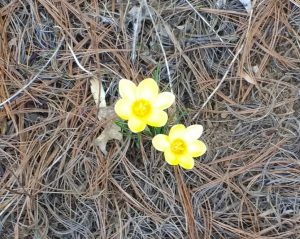
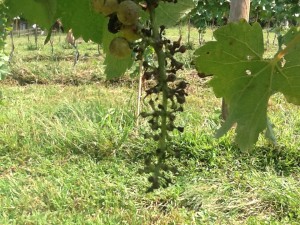
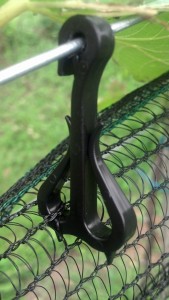
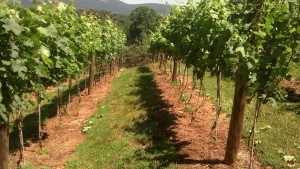
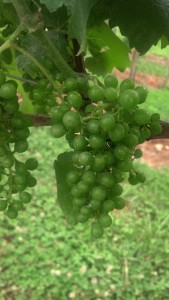
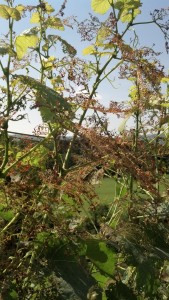
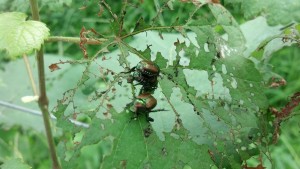


Recent Comments